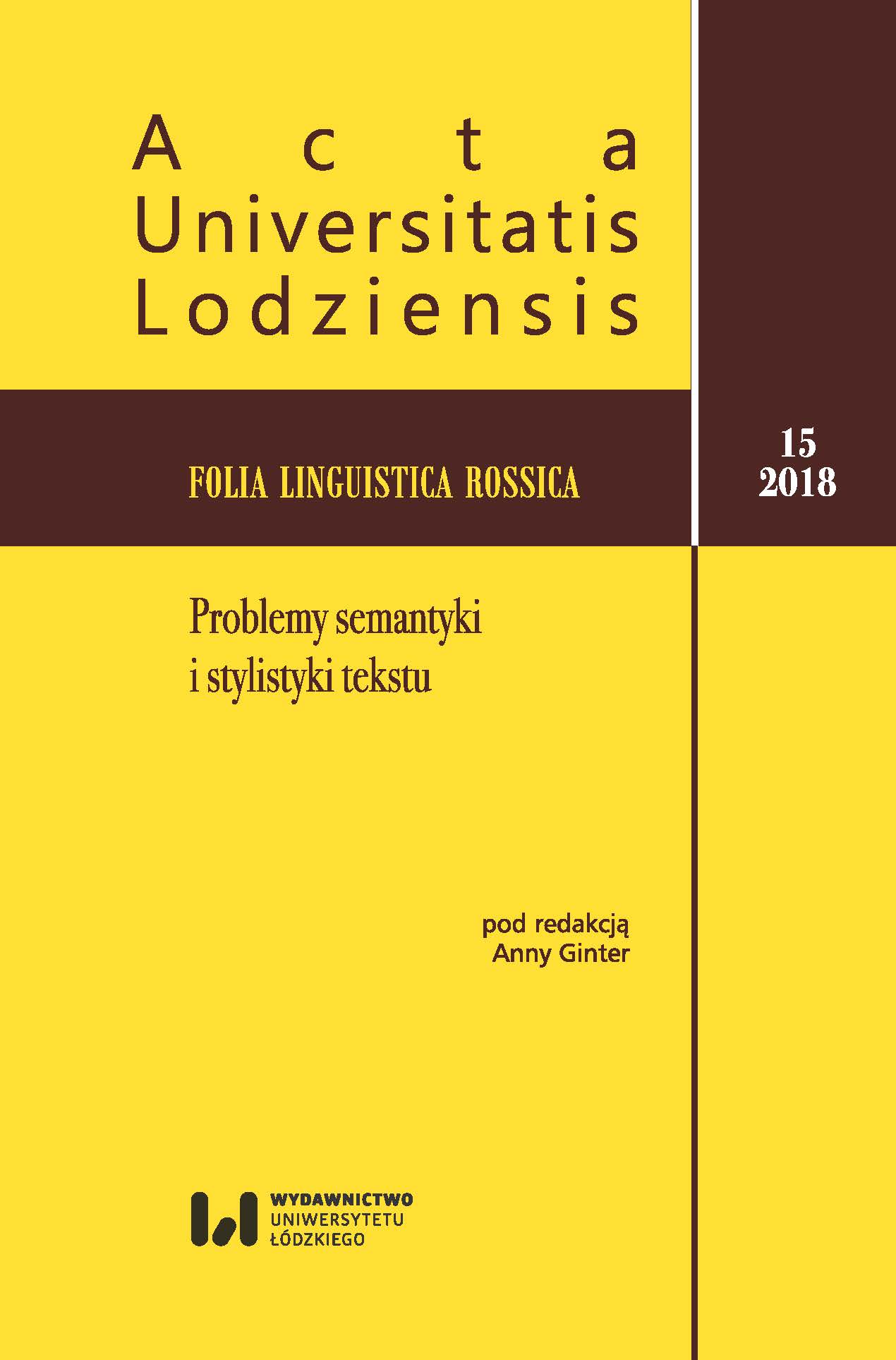Synestezja jako forma języka figuratywnego. Rozważania o synestezyjnych asocjacjach Vladimira Nabokova
Synaesthesia as a figurative language device on synaesthetic associations of Vladimir Nabokov
Author(s): Anna GinterSubject(s): Language and Literature Studies, Theoretical Linguistics, Studies of Literature
Published by: Wydawnictwo Uniwersytetu Łódzkiego
Keywords: synaesthesia; figurative language; synaesthetic metaphor; metonymy; hypallage; Vladimir Nabokov; synestezja; język figuratywny; metafora synestezyjna; metonimia; hypallage; Vladimir Nabokov
Summary/Abstract: The main goals of the article are to present the place of synaesthesia among the other devices of figurative language and to show diversity of synaesthetic associations in Vladimir Nabokov’s prose. As it has been proved, a key notion for understanding the mechanism and functioning of figures, such as synaesthesia, metaphor and metonymy, is that of conceptual conflict. The presence or absence of conceptual conflict underpins the distinction between living and conventional figures, as well as metonymy and hypallage. What is more, the distinction between metaphor and metonymy is based on the way they deal with conflict. In turn, interpretation of conceptual conflict may lead to understanding the mechanism of a synaesthetic association and the author’s strategy. The examples of Nabokov’s synaesthetic expressions show that metonymy and synaesthesia may be both present in a text and that they interact. However, it is worth underlying, that in literary texts synaesthesia may also coexist with hypallage and similes involving sensory lexemes, as it was observed on the examples of Nabokov’s prose. // Głównym celem dyskusji podjętej w niniejszym artykule jest określenie miejsca, jakie synestezja zajmuje wśród innych środków języka figuratywnego oraz zaprezentowanie różnorodności asocjacji synestezyjnych w prozie Vladimira Nabokova. Jak to zostało dowiedzione, pojęciem kluczowym w zrozumieniu mechanizmu powstawania i funkcjonowania form języka figuratywnego, takich jak synestezja, metafora i metonimia, jest pojęcie konfliktu konceptualnego. Obecność lub brak konfliktu decydują o zakwalifikowaniu danego wyrażenia do kategorii form żywych lub konwencjonalnych oraz do metonimii lub form określanych jako hypallage. Co więcej, różnice między metaforą i metonimią dotyczą sposobu, w jaki formy te ‘radzą sobie’ z konfliktem pojęciowym. Z kolei interpretacja sprzeczności konceptualnej może prowadzić do wyjaśnienia mechanizmu asocjacji synestezyjnych i strategii autorskich. Przykłady wyrażeń synestezyjnych Nabokova świadczą o tym, że synestezja i metonimia mogą wchodzić w interakcje. Warto jednak podkreślić, że w tekście literackim synestezja współistnieje również z takimi formami zawierającym określenia sensoryczne, jak hypallage i porównanie, co zostało wykazane na przykładach z opowiadań i powieści Nabokova.
Journal: Acta Universitatis Lodziensis. Folia Linguistica Rossica
- Issue Year: 2018
- Issue No: 15
- Page Range: 179-190
- Page Count: 12
- Language: Polish

